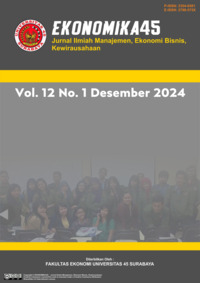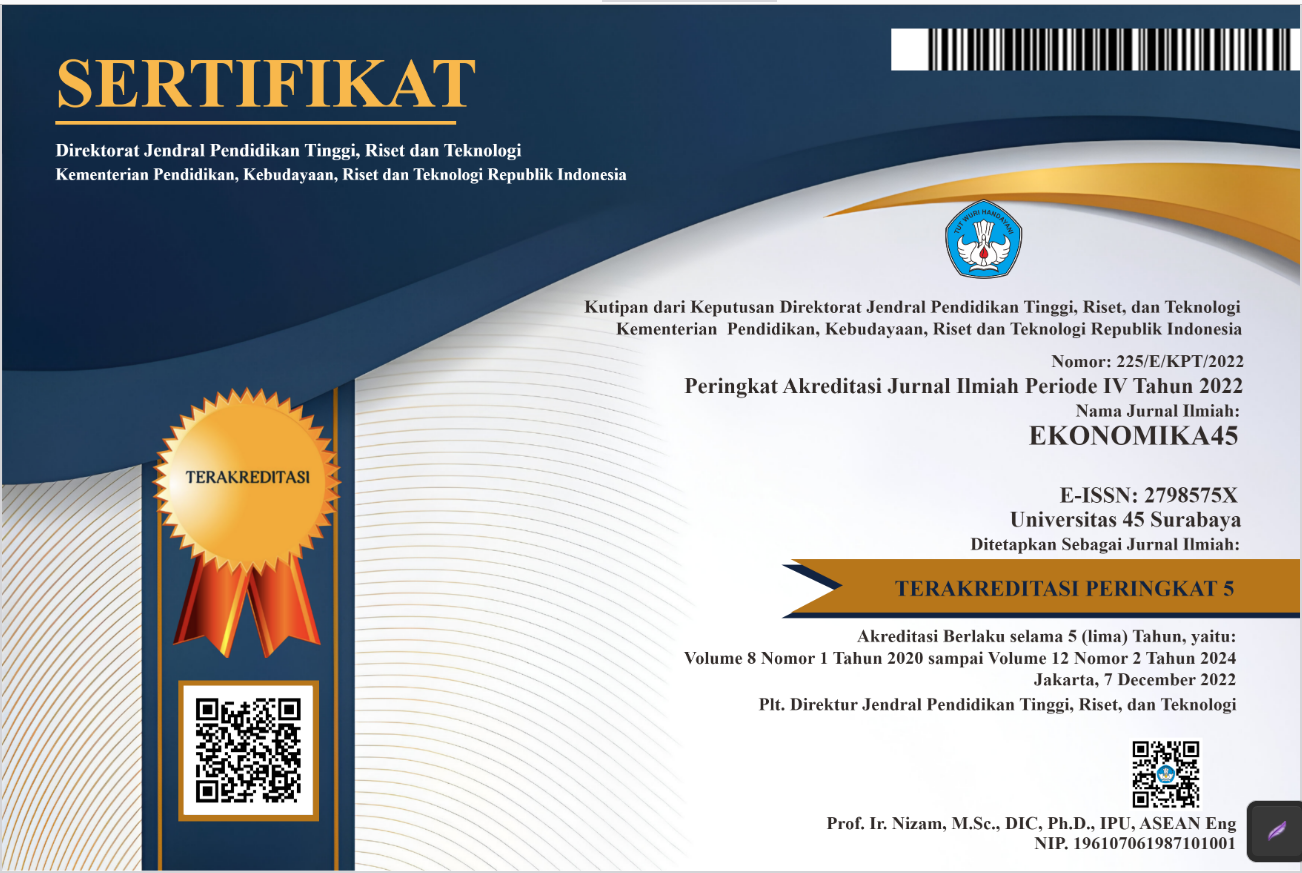Pengaruh Disiplin Kerja, Lingkungan Kerja Fisik, dan Pengalaman Kerja Terhadap Produktivitas Kerja Karyawan PT Xyz
DOI:
https://doi.org/10.30640/ekonomika45.v12i1.3503Keywords:
Discipline, Environment, Experience, ProductivityAbstract
This study aims to analyze and test the influence of work discipline, physical work environment, and work experience on employee work productivity at PT XYZ. The research approach used in this study is quantitative. The study involved employees of PT XYZ as respondents, with a sample size of 64 respondents. Data analysis was conducted using descriptive statistics and regression analysis. The results of the study indicate that work discipline has a significant positive influence on employee work productivity. However, the physical work environment does not have a significant influence on work productivity. Work experience, on the other hand, has a significant positive influence on employee work productivity at PT XYZ.
References
Adamy, M. (2016). Manajemen sumber daya manusia (Teori praktik dan penelitian). Unimall Press.
Afandi, P. (2016). Concept & indicator human resources management for management research. Deepublish.
Ambiya, A. N. (2021). Analisis produktivitas kerja pegawai di masa pandemi Covid-19 pada Dinas Kebudayaan Provinsi Riau.
Aziz Sholeh, Abdul, et al. (2024). Kompensasi terhadap motivasi kerja karyawan pada PT. Insolent Raya di Surabaya. Journal of Management and Creative Business, 2(1), 82–96.
Chin, W. W. (1998). The partial least squares approach to structural equation modeling. Modern Methods for Business Research, 295, 336.
Ghozali, I., & Latan, H. (2015). Partial least squares: Konsep, teknik, dan aplikasi dengan program Smart PLS 3.0. Semarang: Universitas Diponegoro.
Ghozali, I. (2016). Structural equation modeling: Metode alternatif dengan partial least squares (PLS) (Edisi 4). Semarang: Universitas Diponegoro.
Ghozali, I. (2018). Aplikasi analisis multivariate dengan program IBM SPSS 25. Semarang: Universitas Diponegoro.
Hussein, A. S. (2015). Penelitian bisnis dan manajemen menggunakan partial least square (PLS) dengan SmartPLS 3.0. Malang: Fakultas Ekonomi dan Bisnis Universitas Brawijaya.
Kristiawati, et al. (2019). Citra merek persepsi harga dan nilai pelanggan terhadap keputusan pembelian pada mini market Indomaret Lontar Surabaya. Jurnal Ilmu Ekonomi dan Manajemen (JMM 17), 6(2), 27–36.
Manulang. (2013). Manajemen sumber daya manusia. Bandung: Citapustaka Media Perintis.
Prasetyo, et al. (2021). Discipline and work environment affect employee productivity: Evidence from Indonesia. International Journal of Entrepreneurship, 25(5), 1–32.
Putri, C. T. (2022). Faktor-faktor yang mempengaruhi produktivitas tenaga kerja pada PTPN VII Seluma.
Sedarmayanti. (2017). Manajemen sumber daya manusia. Bandung: Refika Aditama.
Sujarweni, V. W. (2014). Metode penelitian: Lengkap, praktis, dan mudah dipahami. Yogyakarta: Pustaka Baru Press.
Sugiyono. (2015). Metode penelitian kuantitatif, kualitatif dan R&D. Bandung: PT Alfabeta.
Sugiyono. (2018). Metode penelitian kuantitatif, kualitatif dan R&D. Bandung: PT Alfabeta.
Sugiyono. (2019). Metode penelitian kuantitatif, kualitatif dan R&D. Bandung: PT Alfabeta.
Supomo, R., & Nurhayati, E. (2018). Manajemen sumber daya manusia. Bandung: Yrama Widya.
Sutrisno, E. (2017). Manajemen sumber daya manusia. Jakarta: Kencana.
Downloads
Published
How to Cite
Issue
Section
License
Copyright (c) 2024 EKONOMIKA45 : Jurnal Ilmiah Manajemen, Ekonomi Bisnis, Kewirausahaan

This work is licensed under a Creative Commons Attribution-ShareAlike 4.0 International License.









